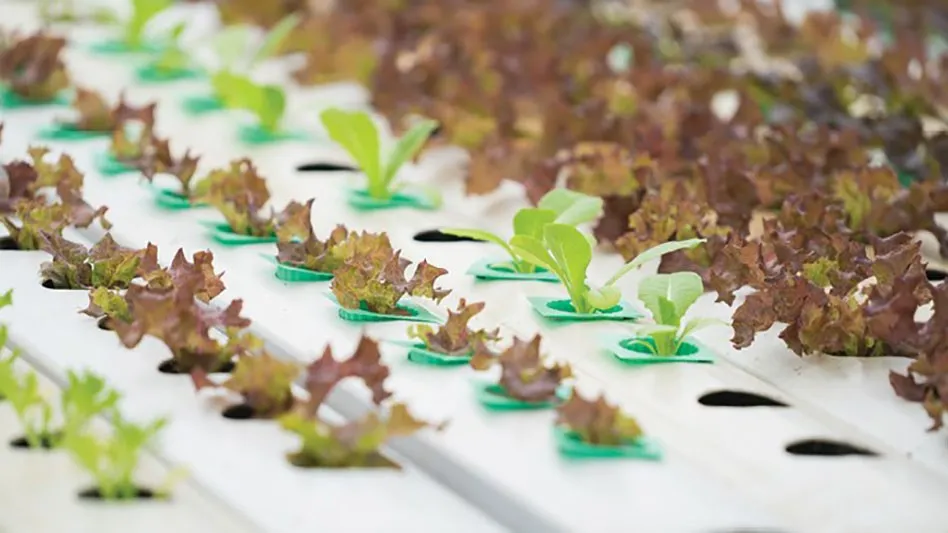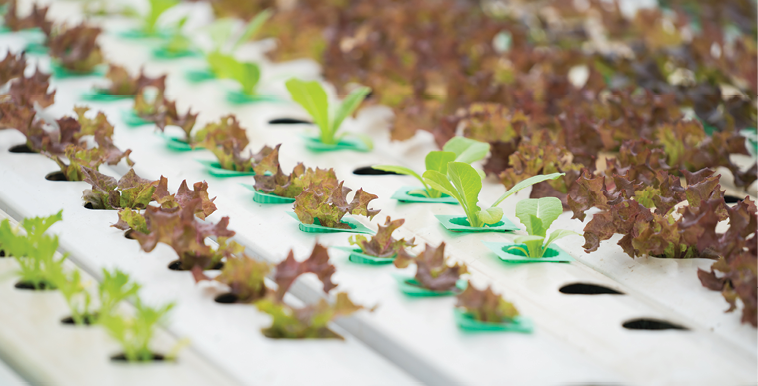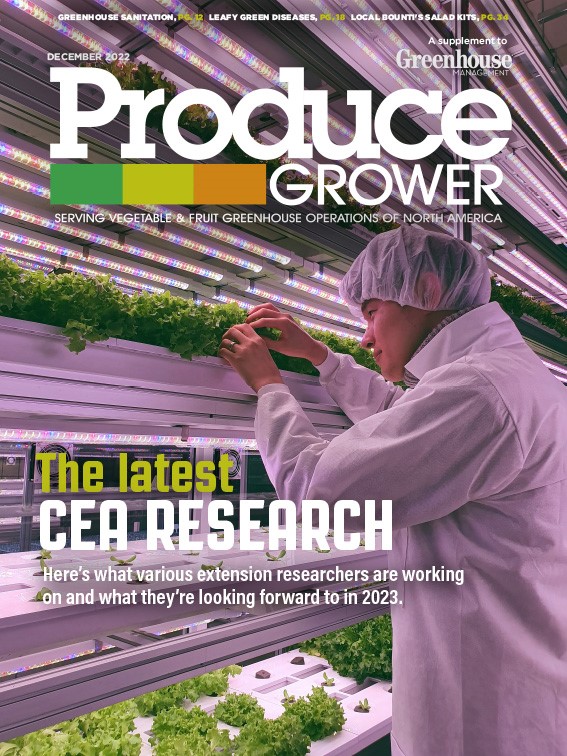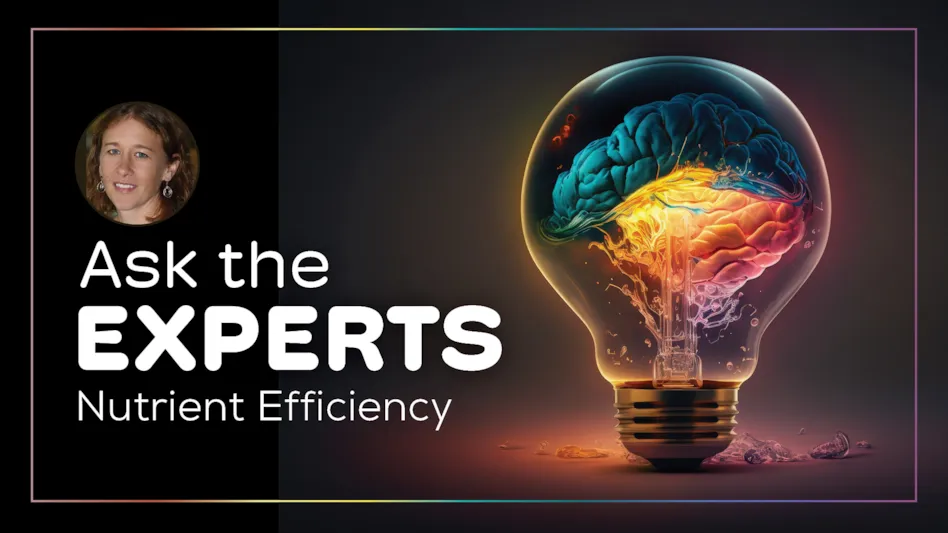

Adjusting how your air temperature is managed can be an effective strategy to increase yields. When thinking about air temperatures, we are primarily concerned about: 1) the average daily temperature (ADT); and 2) the day and night air temperatures and the difference (DIF) between them. The ADT, the integrated temperature over a 24-hour period, primarily controls the rate of growth and development for plants. The DIF (DIF = day temperature – night temperature) influences cell elongation, with elongation increasing with a more positive DIF (i.e., warmer day, cooler night) and decreasing with a less positive or negative DIF (i.e., cooler day, warmer night). Traditionally, DIF is something that container floriculture crop producers deal with, since controlling stem elongation and plant height is a primary concern. However, DIF is a tool that lettuce and leafy green producers can use, too.
The DIF also affects elongation and expansion of other cells, such as those in leaves. While ornamental plant producers are interested in minimizing elongation to control plant size and minimizing DIF, lettuce and leafy green producers can actually use the opposite approach to enhance cell elongation and plant size. Since lettuce and leafy greens are not sold based on size, we are not worried about producing compact plants and suppressing growth. Rather, lettuce and leafy greens are sold by weight, meaning producers benefit from the extra growth. That extra growth means potentially more yield to sell for loose-leaf crops or a shorter production time to reach a certain weight for head- or bunch-forming crops.
Let’s work through examples of how to change the DIF while targeting the same ADT. Start with a lettuce greenhouse with a 68° F air temperature setpoint for both day and night. The ADT would be 68° F and the DIF would be 0° F. Now, let’s change the day (16 hours) and night (eight hours) air temperatures to get a positive DIF, say to 70° F and 63° F, respectively. This would result in an ADT of 67.7° F and a +7° F DIF. Raising the day to 72° F and lowering the night to 60° F would create a +12° F DIF with an ADT of 68° F. Finally, a 75° F day and 57° F would create a +18° F DIF and a 69° F ADT. Our research has found that fresh weight increases with the increasing DIF, up to a point.
Under very large DIFs or at higher ADTs, the day temperatures can be at or above the optimal growing temperature for a given species and growth is diminished. The risk of hitting the base temperature — the temperature at or below which a species stops growing — is not as great because lettuce and leafy greens generally have low base temperatures. When revisiting the air temperature in your facility, be mindful of all the different species in any given heating zone, as polycultures need to take into account the differences among the species being grown and how any changes will affect all your crops.
The benefits of using a large DIF to promote growth doesn’t stop with the plants — it can also help save on heating costs. The amount of energy required to heat a greenhouse decreases as the difference between the indoor and outdoor temperature increases. Running a more positive DIF aligns the heating requirements with the most efficient heating period (day), and minimizes heating during the most inefficient heating period (night). But don’t simply drop the night temperature without increasing the day temperature, as this will lower the ADT and potentially slow down your crop time. Be sure to offset temperature decreases at night with increases during the day to maintain timely crop production cycles.
Look at the temperatures you are using to grow lettuce and leafy greens. Many of these species are more temperate than we currently manage them for. By creating a bigger DIF, you may also be creating opportunities for improving your bottom line.

Explore the December 2022 Issue
Check out more from this issue and find you next story to read.





